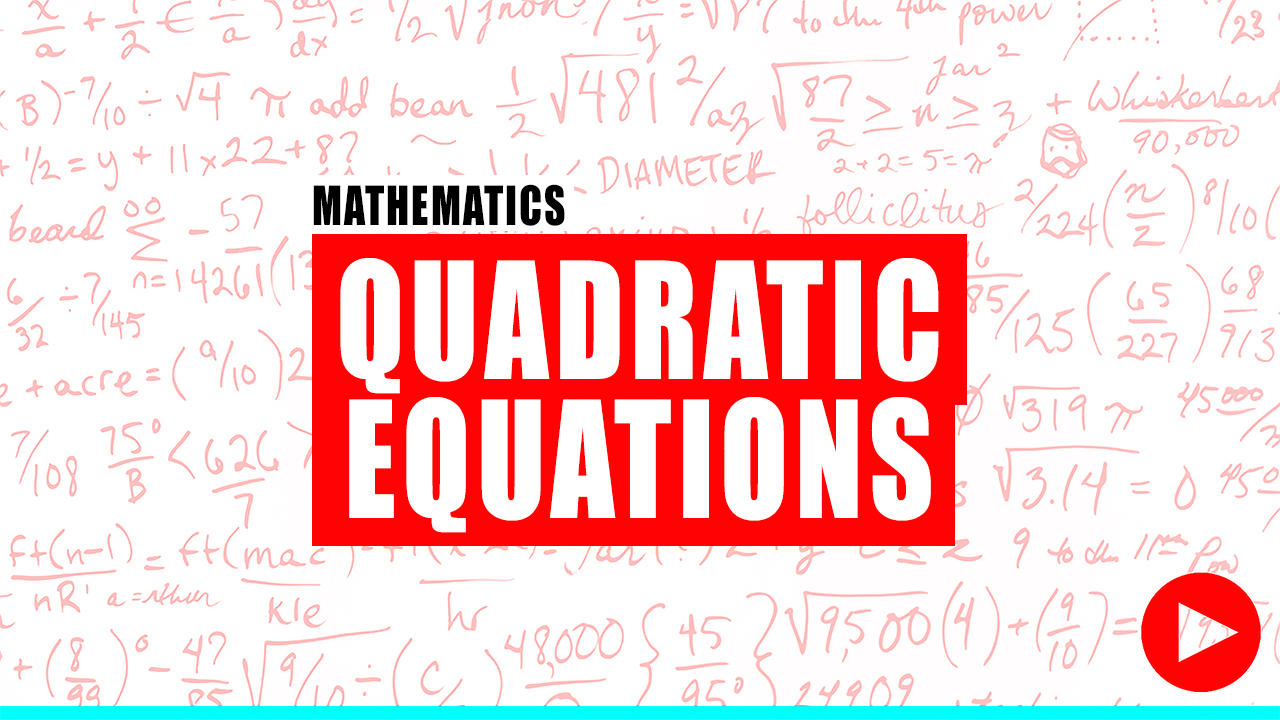In this episode of Engineer In Training Exam TV, Justin walks you through a Fundamentals of Engineering Exam Review of Quadratic Equations.
He will start by defining the standard form of the quadratic equation and run through a common way people go about solving such equations and follow it up with a way to simplify our work in complicated situations.
We will wrap this tutorial up with introducing the Discriminant and what it can tell us when using the quadratic equation.
This Fundamentals of Engineering Exam Review of Quadratic Equations is part of the global subject Mathematics.
Having served over 1.5 million lessons in 150 different countries, it’s safe to say we have been in the trenches.
In the trenches working with those who are taking the exam for the first time, either fresh out of college or having taken a few years off from the books.
In the trenches working with those who have already attempted the exam, maybe multiple times, and can’t seem to crack the code.
In the trenches working with those who have been away from the books for ages, from standardized testing for the same amount of time, and can’t fathom taking on this beast of an exam.
And every iteration in between.
Every student’s situation is unique, but the building blocks of what success looks like are always the same.
Click below to register for the FREE myFE Exam Academy Course.
Once you are registered, you’ll get instant access to a proven roadmap, strategies and tactics…
Straight to your email box.
REGISTER NOW!
Hey what’s going on everyone, it’s Justin Dickmeyer from EngineerInTrainingExam.com.
In today’s video we are going to present a Fundamentals of Engineering Exam Review of Quadratic Equations.
We’ll start off this tutorial by defining a quadratic equation, we’ll move on to solving quadratic equations using factoring, then we’ll move on to the quadratic formula and finish off with defining the discriminant.
So let’s start off our Fundamentals of Engineering Exam Review of Quadratic Equations by defining exactly what a Quadratic Equation is.
So what is a Quadratic equation?
in its simplest form a
quadratic equation is ax squared plus BX
plus C is equal to 0 where a cannot
equal 0 so in other terms a quadratic
equation must have squared term as its
highest power so how do we solve
quadratic equations there are 4 methods
of solving these equations 1 we can
factor 2 completing the square factor by
grouping or using the quadratic formula
in this tutorial in this quick review
we’re going to talk about factoring and
the quadratic formula so a quadratic
equation can be solved by factoring if
after writing that equation in its
standard form the quadratic expression
factors completing this process can be
done in four steps step number one is
getting an equation we want to simplify
it we want to take away any parenthesis
division we want to add like terms
once simplified we want to get it that
equation into the standard form of ax
squared plus BX plus C is equal to 0
step number 3 factor
once we have factored we want to solve
so that’s all let’s look at a quick
example let’s take the equation x
squared plus 3x minus 10 is equal to 0
so the first step is to simplify that’s
completed step number two we want to get
in its standard form
once again convenient it’s completed
step number three we want to factor so
in this case this equation factors out
2x plus five multiplied by X minus 2 is
equal to 0 so we want this product to
equal to 0 so in step number four we
need to solve that and we can just
visualize and see that we’re going to
get X is equal to negative 5 and X is
equal to 2 so this quadratic quadratic
equation has two solutions X equal
negative 5 and X equal 2 so let’s talk
about the quadratic formula you can
solve any quadratic equation by using
the quadratic formula this is convenient
when a quadratic equation does not
factor or is difficult to factor so once
again there’s 4 steps or excuse me
there’s 5 steps in completing this
process step number one is given an
equation we want to simplify just like
that previous factoring we want to get
rid of any parenthesis division we want
to get rid of or combine like terms
step number two is the same as well we
want to get it into standard form so
once it’s in standard form of ax squared
plus BX plus C is equal to zero we can
move on to step number three which is we
need to identify what a is equal what B
is equal and what C is equal once we
identify what a B and C is we can take
the
podriatic formula which is X is equal to
negative b plus or minus the square root
of b squared minus 4ac divided by 2a so
we just take our values of a B and C and
we plug them into this equation and then
step number five would be whatever those
values all are if we can simplify and
make them complete whole numbers and
that’s great let’s do that so once again
let’s look at a quick example let’s take
the equation 2x squared minus 5x plus 1
is equal to zero
once again step number one of
simplifying is done step number two of
getting it in its standard form is
completed step number three in this case
a is equal to 2 B is equal to negative
five and C is equal to one step number
four we take the quadratic formula and
populate it so in this instance where
you go – of negative 5 plus or minus the
square root of negative five squared
minus four times two times one and
that’s all over two times two so let’s
move up here now that we have all of our
values for a B and C plugged into the
quadratic formula we can solve and we
get X is equal to 5 plus or minus the
square root of 25 minus eight divided by
four and this doesn’t simplify and do
whole numbers or anything but we can
simplify it a little bit as X is equal
to 5 plus or minus the square root of 17
divided by 4 so those are our two
solutions for this quadratic equation
so let’s talk about the discriminant
when we’re given an equation or a
quadratic equation x squared once again
BX plus C is equal to zero right off the
bat we can take a look at it and know if
we can divide define a B and C we can
define the discriminant and if we can
define the discriminant then we can use
a couple known factors to determine what
our solutions are going to look like to
these this equation so in other words
let me define it like this the
discriminant in the quadratic formula is
that under the square root of the
quadratic formula on the top which is b
squared minus 4ac so we have all these
defined in a given quadratic equation
and if we do we can determine what type
of solutions we should expect to see so
in other words we can put this into a
table say we define our discriminant and
that discriminant is less than 0 if it’s
less than zero then there are going to
be two distinct real number answers
solutions to that quadratic equation if
that discriminant is equal to zero then
there’s going to be one real number
solution if that discriminant is greater
than zero then there’s going to be two
distinct complex
imaginary numbers solutions so that’s it
so the discriminant once again the
quadratic equation minus B plus or minus
the square root of b squared minus 4ac
divided by 2a this right here that’s the
discriminant so once we get a quadratic
equation we can determine what the value
is of that discriminant take it to our
table and know what we know what to
expect when we determine our solutions
so that’s that that’s that quick
overview of quadratic equations I
appreciate you guys checking out the
YouTube channel don’t forget to head
back over to engineering training exam
comm and check out more free resources
for you as you prepare for the engineer
and training exam so good luck everybody
we’ll be talking soon.
—
Follow Prepineer Online Here:
Instagram: https://instagram.com/prepineer
Prepineer Facebook: https://facebook.com/prepineer
EngineerInTrainingExam Facebook: https://www.facebook.com/EngineerInTrainingExam
Snapchat: https://www.snapchat.com/add/prepineer
Website: https://www.Prepineer.com
Website: https://www.EngineerInTrainingExam.com
Twitter: https://twitter.com/prepineer
Passing the FE Exam – Engineering Advice (private Facebook group): https://www.facebook.com/groups/372061059925853/







Leave a Reply